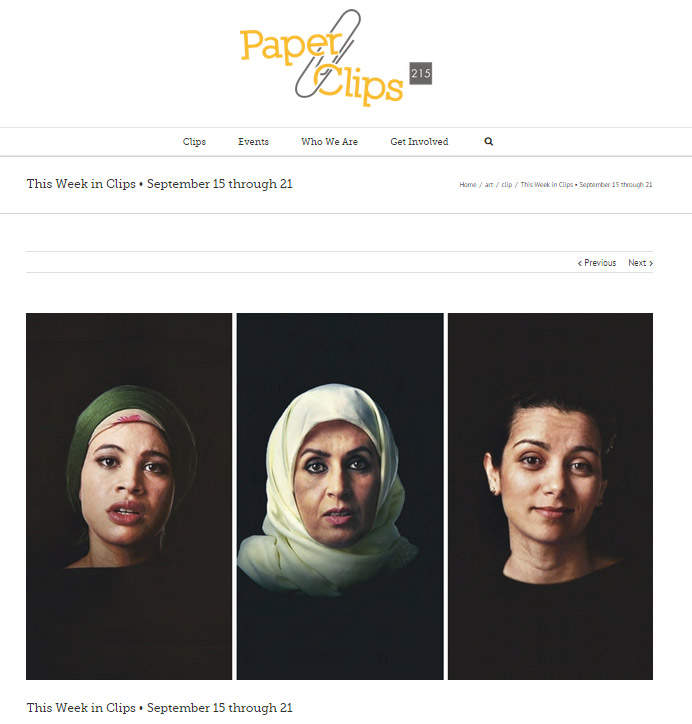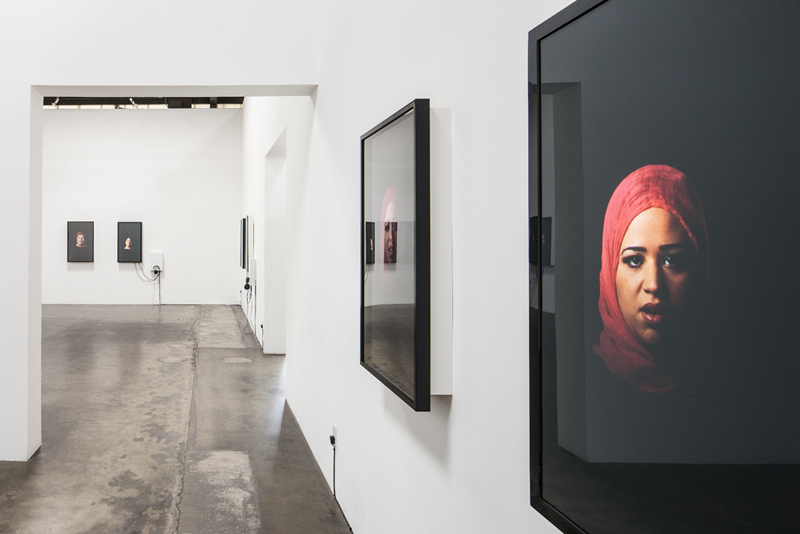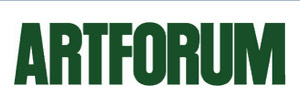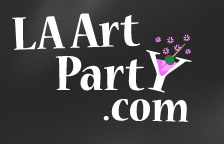“A Window Into the Lives of Women Living in Cairo”
Deena ElGenaidi.
Hyperallergic.
25 October, 2018.
Complete article: https://www.judithbarrymedia.com/press/cairo-stories/Deena-ElGenaidi_Judith-Barry_hyperallergic.pdf
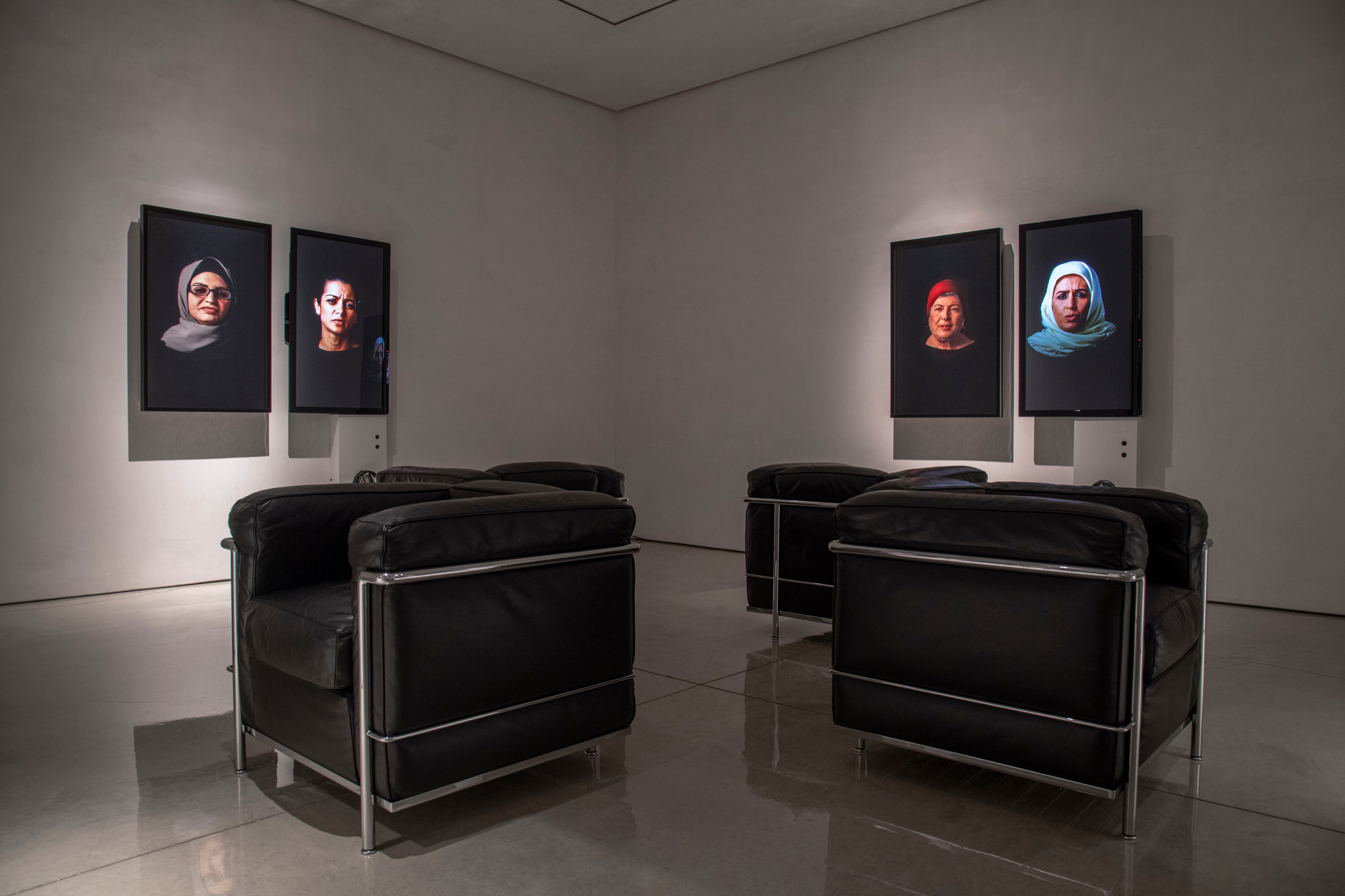
Installation view: Mary Boone Gallery 2018
Press Release
https://www.maryboonegallery.com/exhibition/2131/press-release
Back to the Mary Boone exhibition page
“Slought Foundation Exhibit Sharies Stories of Cairo Women.”
Freda Zhao.
The Daily Pennsylvanian.
16 September, 2014.
Complete article: http://www.thedp.com/article/2014/09/cairo-stories
…Cairo stories public programs at Slought: https://slought.org/resources/cairo_stories_programs
Featured pick.
“This Week in Clips, Sept. 15 – 21.”
PaperClips
15,September, 2014.
Complete article: http://www.paperclips215.com/event/cairo-stories/
Judith Barry and …Cairo stories
Arabesque – Levant TV
May, 2014
Interview with Judith Barry at Whitechapel Gallery, London. Aired on Levant TV, Arabesque.
[youtube=http://youtu.be/U7NH4-pQHpY]
Conversation | Judith Barry
ArtBlitz Los Angeles
May 5, 2014
Not reconciled, is a series by Judith Barry that explores the construction of subjectivity, history and identity in countries and cultures around the world. In her latest rendition of that series…Cairo Stories,which was on view at Rosamund Felsen Gallery in April, Barry presents interviews with Cairene women from varying backgrounds. The stories the women tell focus on the negotiations they must make due to Cairo’s social, cultural and economic life. Conducted between 2003 and 2011, the interviews demonstrate the complex systems, allegiances and political stratas that Cairene women must navigate on a daily basis. Sometimes their stories feel un-relatable, as when Ayousha describes how “my husband died, and they wanted his brother to take me as another wife.” Other times their observations hit closer to home, as when Layla remarks, “We all have our shares in life, God willing…You got dealt your. I got mine. My sisters theirs…Everyone gets their share…But you got to make it what you can.” Either way, the more stories a viewer hears the more intimate a connection she feels toward these women, despite their diverse backgrounds.
Presented in both Arabic and English, by actors rather than the actual interviewees, there is something unsettling and poignant about watching the interviews, particularly in doing so within a pristine gallery setting. In listening to these women’s experiences notions of representation, allegiance, class, family history and subjectivity are brought to the fore. One cannot help but compare these women’s journeys to one’s own. The presence of the actors emphasizes the idea that a story, if it’s a good one, no matter how it’s told, can be highly emotionally impactful.
Though you missed the show at Bergamont Station three of Barry’s works are currently on view as part of the Hammer Museum’s exhibition Take It Or Leave It: Institution, Image, Ideology through May 18, 2014. Or you can read ArtBlitz LA’s interview at ArtBlitz Los Angeles.
…Cairo stories
On KCHUNG Radio, 1630 AM
April 13, 2014 at 8 pm, PST
To stream: See http://www.kchungradio.org/stream.html
Archive available on April 16, 2014 as …Cairo stories.
To access the archive, search KCHUNG by the air date: http://www.kchungradio.org/
The Wall Street Journal
“Culture-War Holdout” by Richard B. Woodward
March 11, 2014
Article excerpt:
“…To trace the history of appropriation and institutional critique, the curators have commendably chosen work by some of the usual suspects— Mike Kelley, Sherrie Levine, Allan McCollum, David Wojnarowicz —as well as less-celebrated figures. Of the 37 artists, 17 are women. Several bold-face names— Jeff Koons, Richard Prince, David Salle —have been excluded to make room for work that isn’t as widely circulated: by Judith Barry, Dara Birnbaum, Mark Dion, Renée Green, Mary Kelly, Sylvia Kolbowski, Zoe Leonard, Cady Noland, Stephen Prina and Fred Wilson.
In a show stuffed with what Ms. Fraser’s fake curator would call “difficult work,” one needs to choose wisely where to invest effort. How, why, or if a frame shapes our ideas about art and whether taxonomy is necessary for the understanding of it are themes that run throughout the rooms. Ms. Noland’s “Frame Device” (1989)—a set of pipes arranged like a boxing ring, with aluminum walkers crowded into each corner—has formal and social associations with its neighbor, Haim Steinbach’s “Backyard Story” (1997). Tucked against the back wall, this friezelike composition of gleaming Weber grills, stacked firewood, plastic jack-o’-lanterns and clothes hanging on a line carries references to hardware-store shelves and a museum’s storage room. Ms. Noland and Mr. Steinbach have each distorted ideals of masculinity to rearrange our mental furniture…”
To read the complete article, please visit The Wall Street Journal online.
Source:
The Wall Street Journal
Glasstire
(Recommended Events)
Source:
Glasstire Social Events: http://www.glasstire.com/socal/events/2014/03/10/judith-barry-cairo-stories-mar-22/
Glasstire Recommended Events: http://www.glasstire.com/socal/post-regions/santa-monica/
Art Forum
US Museum Exhibitions
March 11, 2014
Source: http://artforum.com/museums/item_id=13377#item13377
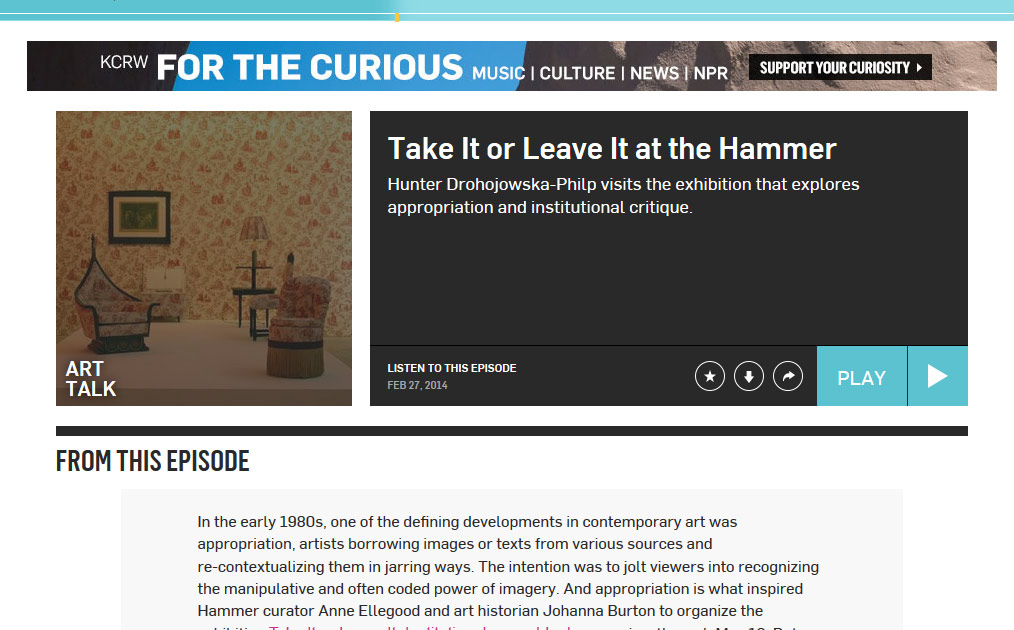
KCRW
Art Talk
February 27, 2014
Host: Hunter Drohojowska-Philip
Art Talk Editorial Excerpt:
In the early 1980s, one of the defining developments in contemporary art was appropriation, artists borrowing images or texts from various sources and re-contextualizing them in jarring ways. The intention was to jolt viewers into recognizing the manipulative and often coded power of imagery. And appropriation is what inspired Hammer curator Anne Ellegood and art historian Johanna Burton to organize the exhibition Take It or Leave It: Institution, Image, Ideologyon view through May 18. But they added a twist by focusing on artists who used appropriation strategies to critique aspects of the larger culture and its institutions.
In addition, they chose to highlight Feminist artists who were among the first to engage in what has come to be known as institutional critique: questioning the decisions that determine who is heralded and why in museums and galleries and other institutions.
This is a bold twist and one that results in a considerable amount of text-based work, photographic representation and video, logical choices for artists looking at the content of mass media: Sherrie Levine, Jenny Holzer, Gretchen Bender, Dara Birnbaum, Judith Barry among them but installations also abound by artists as varied as Stephen Prina, Haim Steinbach, Cady Noland and William Leavitt…
To read the entire article, visit the source: http://www.kcrw.com/etc/programs/at/at140227take_it_or_leave_it_
SFAQ International Arts and Culture
Exhibition Review
18 MArch, 2014
By Gladys-Katherina Hernando
Article Excerpt:
“Because images do stand in for and motivate social change, the arena of representation is a real ground for struggle.” -Carol S. Vance, “The War on Culture,” 1990
The exhibition “Take It or Leave It: Institution, Image, Ideology” at the Hammer Museum is an extensive historical exhibition that examines the fundamental roots of institutional critique and appropriation over a forty-year period beginning with pivotal works by feminist artists of the 1960s. Curated by Anne Ellegood and New Museum curator Johanna Burton, the framework examines the development and evolution of appropriation—the borrowing of images and styles from mass media or fine art sources—and institutional critique—the interrogation of art, society, and its structures from within. As a whole, the framework resists what Barbara Kruger has called “decadism,” presenting works from the past as well as the recent present in order to explore history as a mercurial, fluid subject rather than an overarching period.
With each gallery separated by distinct terms—Representation, Politics, Media, America, Language, Interaction, Public Record, and Archive—the spaces overflow with objects and installations. The exhibition display pushes against conventions of a neatly organized exhibition suggesting that institutions, images, and ideology can all be rather messy subjects. And since the works are not chronological, the exhibition forms a constellation of ideas that create generative slippages between memory, history, the past, and the present, building a potential for these subjects to evolve in the future.
To read the complete article, visit SFAQ online: http://www.sfaqonline.com/2014/03/take-it-or-leave-it-institution-image-ideology-at-the-hammer-museum-los-angeles/
LA Art Party
Pick of the Week
Rosamund Felsen celebrates the work of Judith Barry.
Source:
LA Art Party – http://www.laartparty.com/index.php/56-picks-of-the-week/1516-saturday-march-22nd-2014
Mutual Art
Santa Monica Exhibitions
Continuing her Not reconciled series where she investigates the construction of subjectivity, history and identity in countries and cultures around the world, Judith Barry presents videos and photographs at Rosamund Felsen Gallery from her latest series, …Cairo stories. Through collaboration with Cairene women from many different backgrounds, these stories focus on the negotiations women make across Cairo’s social, cultural and economic life and illuminate the complex systems, allegiances and political stratas that inform their daily lives. These interviews, conducted in Cairo between 2003 and 2011, took place in both English and Arabic, as do the stories on view in the gallery.
In exploring the experiences of Cairene women – Cairo being the center of the Middle East – notions of representation, history, and subjectivity are brought to the fore. These stories, retold by actors, underscore the fact that all stories, even ones we tell ourselves, are ultimately fictions, while maintaining the emotional impact of each of these individual woman’s life.
Source:
MA (Mutual Art) – http://www.mutualart.com/Exhibitions/Judith-Barry——-Cairo-stories/D2DAD3A489521F94#Info
Graphite
Interdisciplinary Journal of the Arts
Event Review/Response
May 18, 2014
Article excerpt:
“It was an incredibly enchanting to see Mary Kelly, Judith Barry, Dara Birnbaum, and Andrea Fraser all on one panel together, but it didn’t seem like their conversations were as extreme as I hoped they would be. The future of one of art’s most controversial and exciting topics of the last few decades seems to rely on new artists to continue the practice as hope for its development was not optimistic from the panel. It was a really nice thing to hear all of them discuss their practice and I’m grateful for the potential once-in-a-lifetime chance to see them all together in person, but I would recommend that experiencing the pieces that they contributed to Take It or Leave It: Institution, Image, Ideology at the Hammer Museum is another great way to see them all together in a more insightful way.” – Gabe Garza
To read the complete article, visit the source: http://www.graphitejournal.com/the-future-of-institutional-critique/
Artillery Magazine
Editorial
http://artillerymag.com/thanks-ill-leave-it/
Press Kit
Levantine Cultural Center Press Release – Levantine-Cultural -Center-women-film-forum-flyer-4-24-14
Rosamund Felsen Press Release – Judith Barry 2014 (…Cairo stories) (Download PDF)
The Hammer Museum – Take It or Leave It Press Release 2014 (Download PDF)

